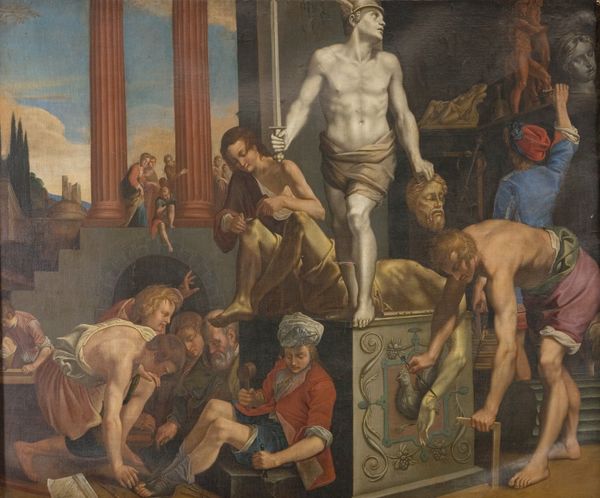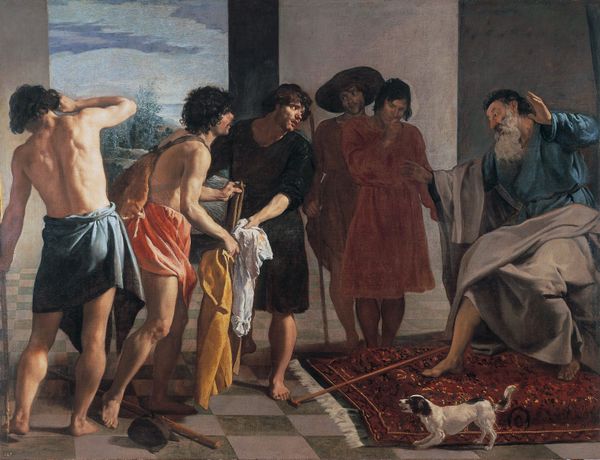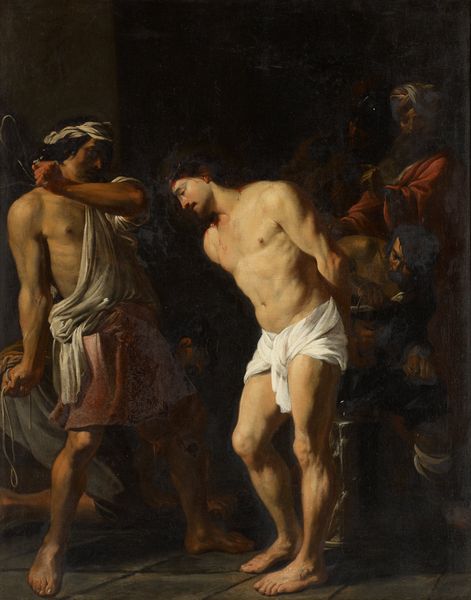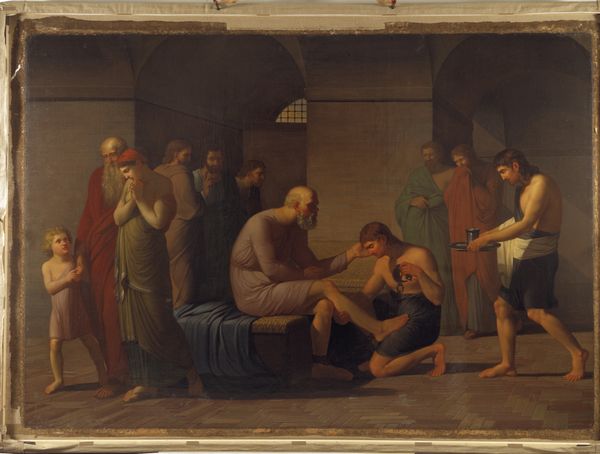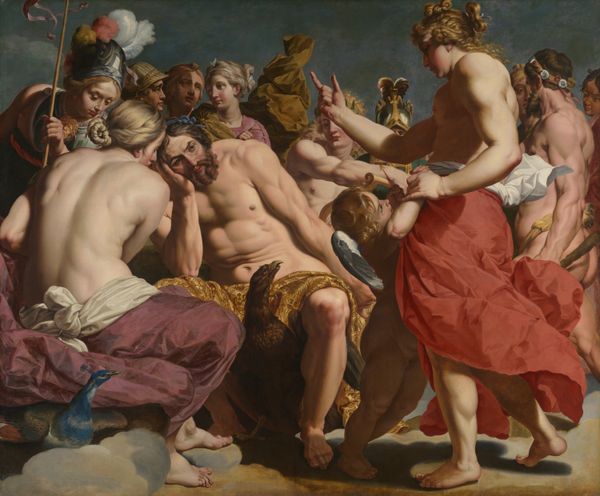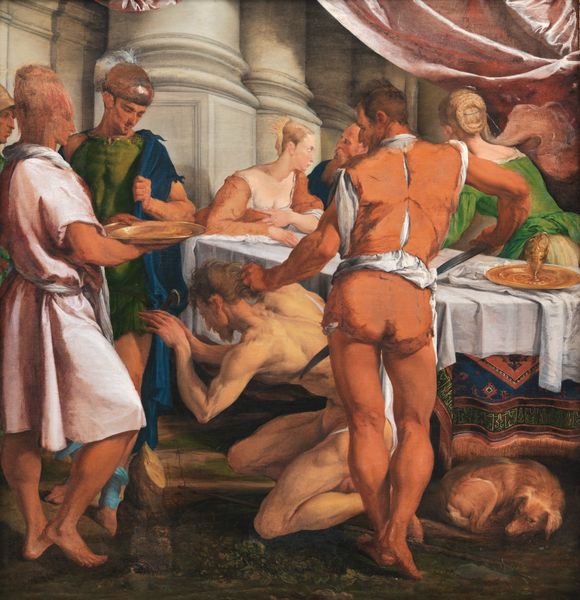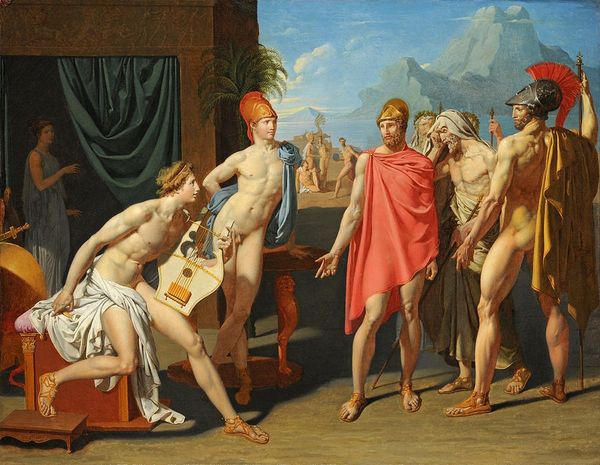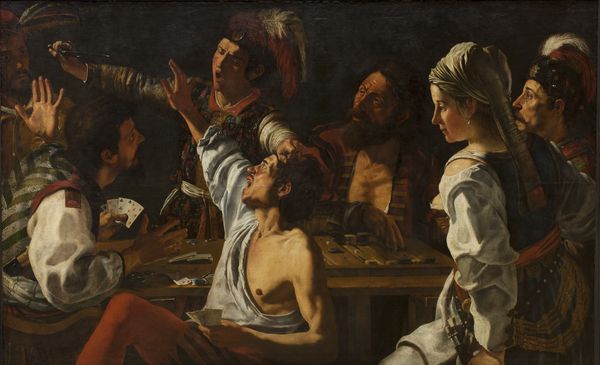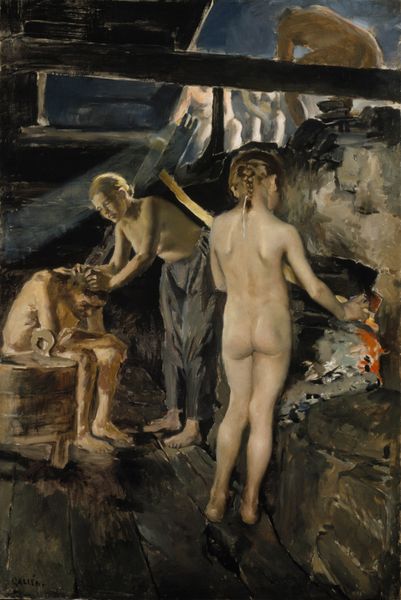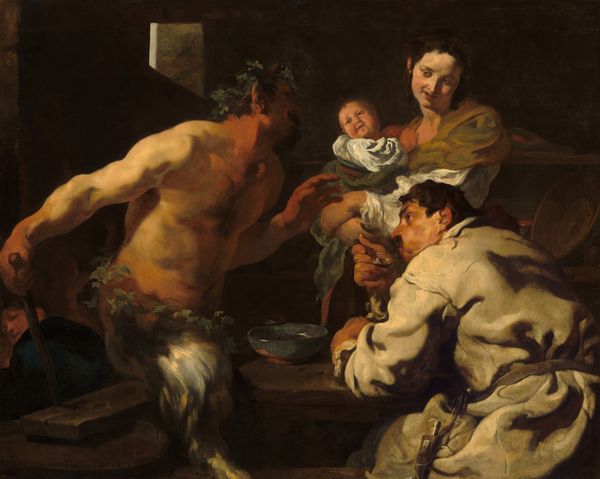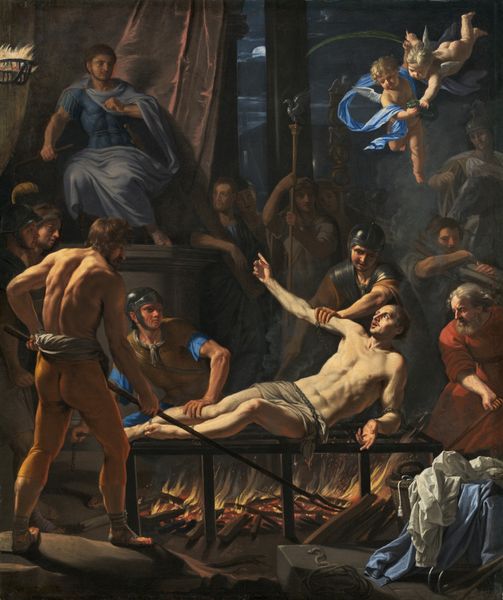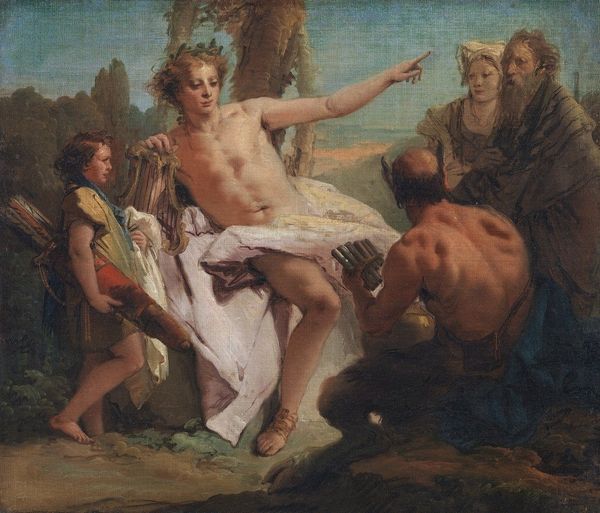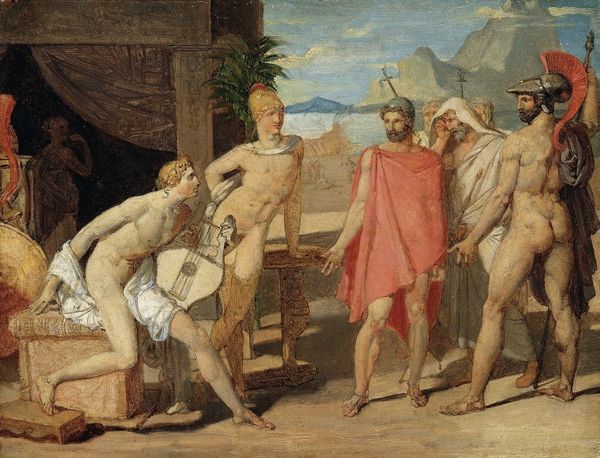
oil-paint
#
portrait
#
baroque
#
oil-paint
#
figuration
#
oil painting
#
roman-mythology
#
mythology
#
human
#
history-painting
Dimensions: 290 x 223 cm
Copyright: Public domain
Editor: We are looking at "The Forge of Vulcan," an oil painting completed in 1630 by Diego Velázquez. It is currently housed in the Museo del Prado in Madrid. The scene feels frozen in this moment of high drama. What do you make of the composition? Curator: Notice how the figures are arranged in a shallow space, almost stage-like. This compression amplifies the emotional intensity. Consider the dramatic use of light and shadow. The stark contrast not only models the figures but also highlights the key narrative moment. Note how the god Apollo is bathed in divine light on the left. Observe the meticulous rendering of the metalwork; how does this contribute to our understanding of the painting's themes? Editor: I hadn't really noticed that the textures appear to add to this feeling of surprise. It is hard to look past the faces of the blacksmiths. Curator: Indeed, consider the way Velázquez renders each of the blacksmiths, as he has chosen not to idealize these figures; what effect do you think this has on our interpretation of the mythic subject matter? The light reflecting off the hot metal, juxtaposed with the expressions of shock and disbelief, creates a powerful visual tension. Editor: The contrast between Apollo's luminous appearance and the grittiness of the forge really enhances that sense of contrast. Thanks, this closer inspection was very enlightening! Curator: Agreed, recognizing those material contrasts allows us a deeper appreciation of the artwork's conceptual dimensions.
Comments
No comments
Be the first to comment and join the conversation on the ultimate creative platform.
